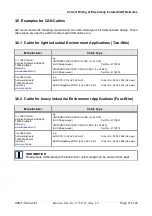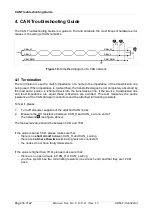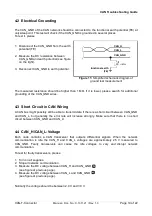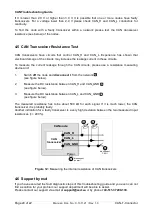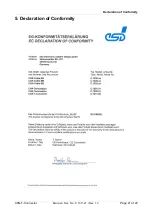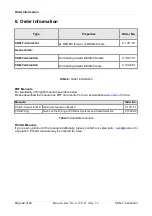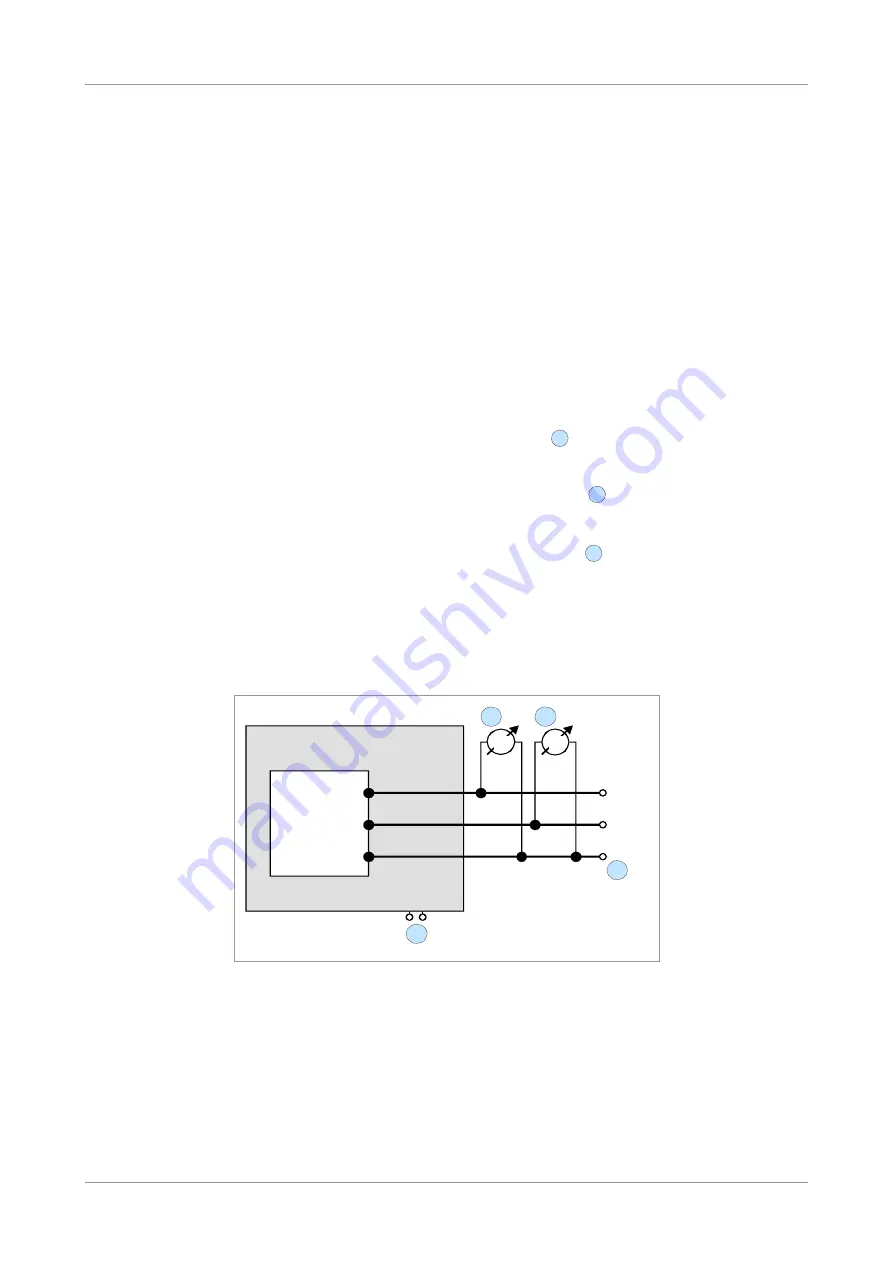
CAN Troubleshooting Guide
If it is lower than 2.0 V or higher than 3.0 V, it is possible that one or more nodes have faulty
transceivers. For a voltage lower than 2.0 V please check CAN_H and CAN_L conductors for
continuity.
To find the node with a faulty transceiver within a network please test the CAN transceiver
resistance (see below) of the nodes.
4.5 CAN Transceiver Resistance Test
CAN transceivers have circuits that control CAN_H and CAN_L. Experience has shown that
electrical damage of the circuits may increase the leakage current in these circuits.
To measure the current leakage through the CAN circuits, please use a resistance measuring
device and:
1.
Switch
off
the node and
disconnect
it from the network
(see figure below).
2.
Measure the DC resistance between CAN_H and CAN_GND
(see figure below).
3.
Measure the DC resistance between CAN_L and CAN_GND
(see figure below).
The measured resistance has to be about 500 kΩ for each signal. If it is much lower, the CAN
transceiver it is probably faulty.
Another indication for a faulty transceiver is a very high deviation between the two measured input
resistances (>> 200 %).
Figure 12:
Measuring the internal resistance of CAN transceivers
4.6 Support by esd
If you have executed the fault diagnostic steps of this troubleshooting guide and you even can not
find a solution for your problem our support department will be able to assist.
Please contact our support via email at
+40-511-37298-130
.
Page 20 of 22
Manual • Doc. No.: C.1311.21 / Rev. 1.3
CAN-T-Connector
4
5
6
CAN_H
CAN_GND
CAN_L
5
6
4
4
Power
CAN
transceiver
disconnect
power!
disconnect
CAN!
CAN node












